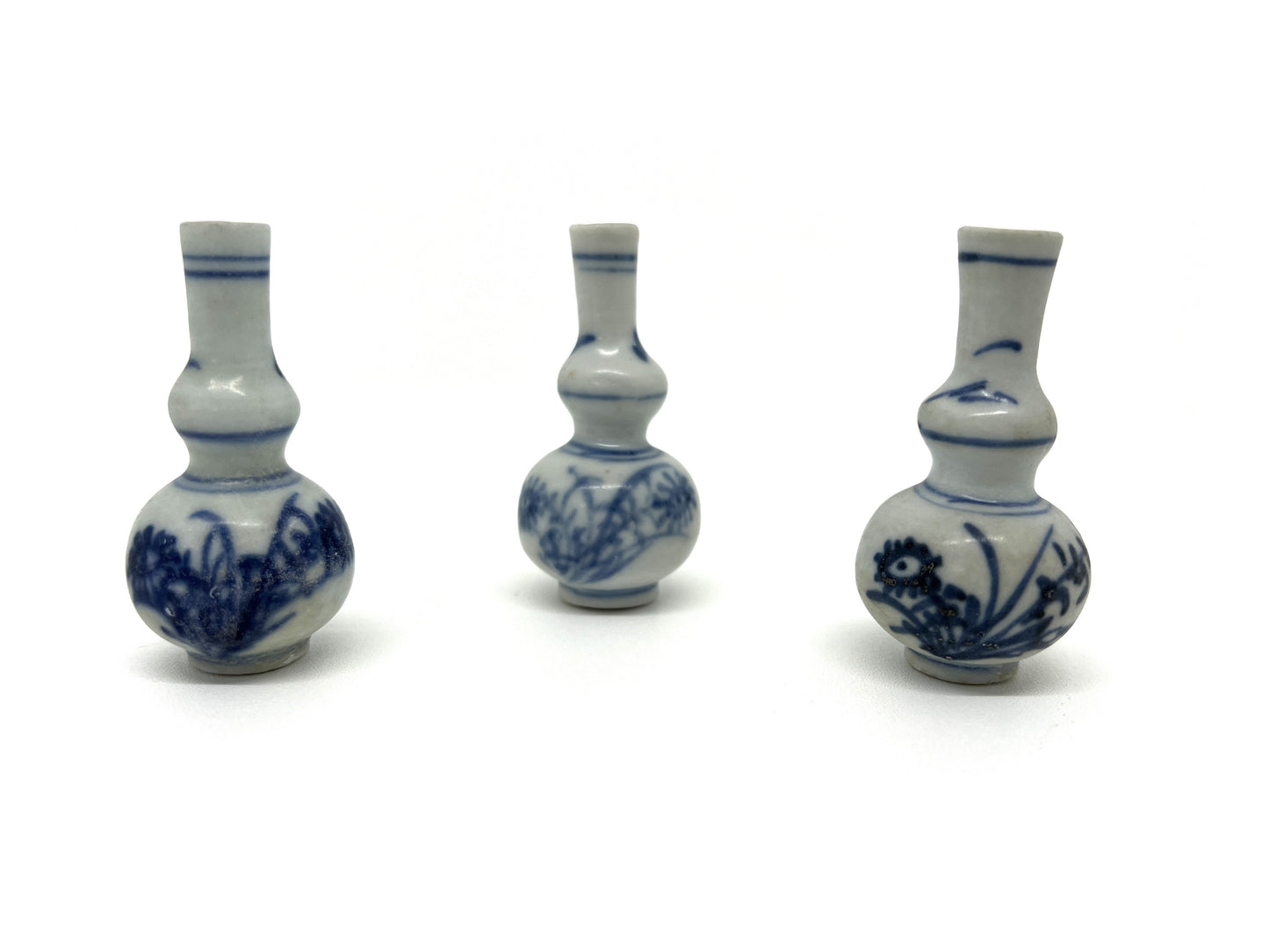AUA Oriental Art
Three Blue and White Miniature Vases, C 1725, Qing Dynasty, Yongzheng Era
Three Blue and White Miniature Vases, C 1725, Qing Dynasty, Yongzheng Era
Couldn't load pickup availability
During Yongzheng era, such miniatures were appreciated for their craftsmanship and aesthetic value. They were also often used in scholars' studios as part of the 'wenfang', or study room ensemble, which included various objects intended to inspire intellectual and artistic contemplation.
Furthermore, these miniature pieces could have been part of a 'dolls house' collection, which was a pastime among the wealthy and the nobility. Miniaturized versions of household items were created for the purpose of display in elaborate miniature houses, showcasing the owner's taste and wealth. In some cases, they were made as 'salesman samples' to demonstrate a potter's skill to potential customers without the inconvenience of transporting larger items.
Additionally, such miniatures were also produced for export to the West, where they became part of the trend for Chinoiserie, reflecting European fascination with Chinese art and design. Their size made them easily transportable and accessible to a wide range of collectors, further enhancing their appeal.
Period : Qing Dynasty, Yongzheng Period
Production Date : C 1725
Made in : Jingdezhen
Destination : Netherland
Found/Acquired : Southeast Asia , South China Sea, Ca Mau ship
Size : 6.0cm (Height), 1.5cm (Diameter)
Condition : Excellent (Slightly worn)
Reference : Double checked with reference to the original catalogues
1) Tau Co Ca Mau(The Ca Mau Shipwreck) Catalogue 2002 / The National Museum of Vietnamese History
2) THE CA MAU SHIPWRECK PORCELAIN : from the Collection of Dr.Zelnik , 2000
3) Sotheby’s Amsterdam, 2007 : Made In Imperial China / Sotheby's
4) Asian Ceramic Found along Maritime Silk Route / National Maritime Museum of Korea
5) Rijksmuseum - Object number : AK-RBK-1960-145-A
* The Ca Mau Cargo
The Ca Mau Cargo refers to a Chinese cargo sunken sometime between 1723 and 1735 off the coast of Vietnam’s farthest point in the South China Sea, discovered by Vietnamese fishermen in 1998. It is believed the ship was a Chinese merchant’s cargo on its way from Canton (Guangzhou) to Batavia when it caught fire and sank. The merchant had ordered the goods on board for Dutch traders, who had limited access to China and its ports.
* Porcelain for the European Market
The Ca Mau Cargo consisted of numerous types of porcelain, chinaware and blue and white wares, all designed for the European market. Blue and white ceramics recovered from the cargo appear decorated with the so-called ‘Scheveningen landscape’, also known as ‘Deshima décor’. This motif usually depicted a traditional Dutch fishing village, executed in Chinese style. Chinese wares with Western motives were extremely popular and made to order and were known as ‘China de commande’.
Share










